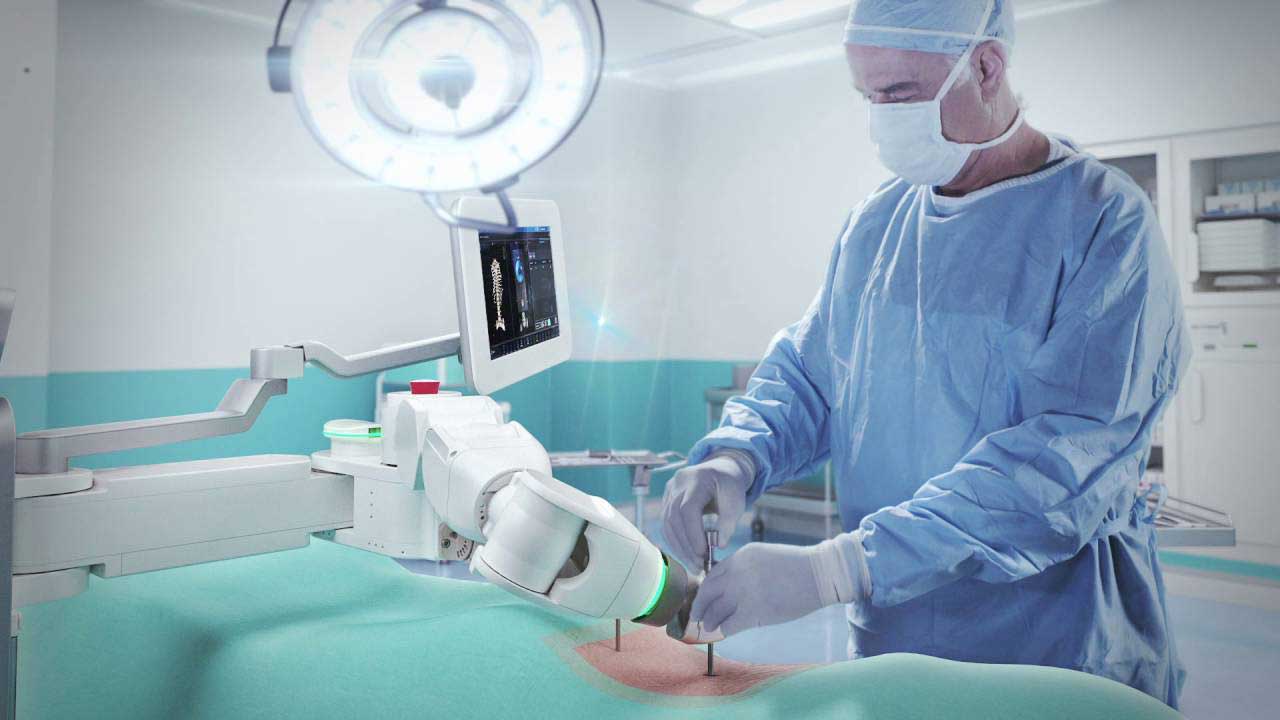Shake hands with the latest surgical robot, the Mazor X for spine surgery.
Yes, this robot has an arm, with an appendage, that surgeons will use to plan (with 3D software), guide and verify each spinal fusion procedure to treat conditions such as spinal stenosis and spondylolisthesis. Hartford HealthCare will be the first health-care system in the Northeast to use this new technology from Mazor Robotics. Already, Hartford HealthCare uses robotic technology in Mako procedures for total hip replacement, knee resurfacing and, more recently, total knee replacement.
Mazor X robotic surgery will debut in March at the Bone & Joint Institute, Hartford Hospital and MidState Medical Center. The technology eventually will be used to correct spinal deformities such scoliosis and in other procedures.
Robot-assisted spine surgery, at its most precise, greatly reduces the likelihood of future surgeries. To provide relief for patients with spinal conditions that cause debilitating pain, surgeons typically place bone tissue, screws and plates in the problem area of the spine, allowing the body’s natural bone growth to fuse the vertebrae gradually. Imprecise placement of surgical screws and implants risks complications, including irritating adjacent joints. With Mazor X, surgeons can actually “see” the procedure before it’s performed, using 3D software and images from the patient’s CT scan. In this “virtual” exercise, they can position the screws while viewing a rotatable, three-dimensional on-screen image.
“Seeing the patient’s complete spine in three dimensions prior to surgery increases the efficiency of the operation,” says David Santoro, director of operations for Hartford HealthCare’s Bone & Joint Institute, “because the surgeon won’t encounter anything unexpected once the procedure is under way.”
The Mazor X arm then guides placement of the screws and implants during the actual procedure before finally verifying the accuracy.

